Receive relief, be homeless
The United States is not only the largest economy in the world, but also a western country with the most serious polarization between the rich and the poor. For a long time, it can’t get out of the dilemma that the rich get richer and the poor get poorer.
Christmas bells and homeless people
A few days before Christmas, it was cold in new york, USA. On the morning of 23rd, residents went to St. michaels’s Episcopal Church on the west side of Central Park in northern Manhattan. Instead of worshipping, they gathered outside the back door of the church with bags in their hands or shopping carts, waiting for free food and warm gloves, shoes and clothes taken out of the church. Whenever the staff took out some items, the people present rushed to get them into their hands, and the staff had to say loudly, "Learn to share".
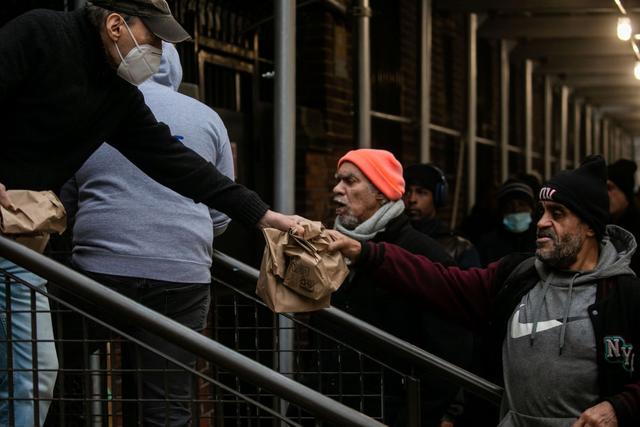
The picture shows that on December 24th, in new york, USA, the staff of "new york Public Food Storage Room" distributed free food to the public. Xinhua news agency
On the east side of Central Park, new york Public Food Store, a non-governmental organization there, did not arrange to distribute free food that day, but "regular customers" still came to find out from time to time. After hearing the disappointing news, some people left disappointed, while others kept ringing the doorbell and expected a response.
On the afternoon of 23rd, Jose Aristeo, who was about sixty years old, came here with an empty shopping cart. He told reporters that he had been here once this morning.
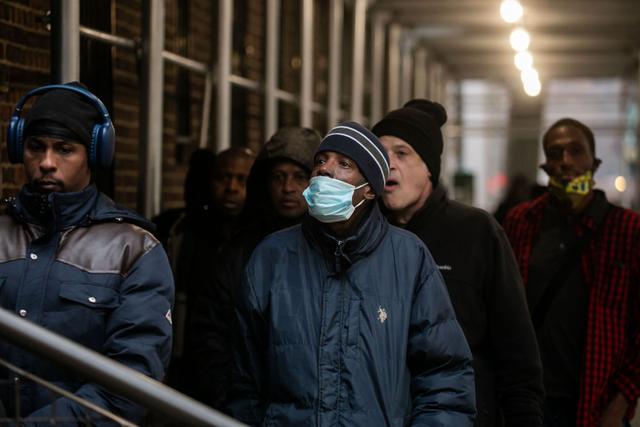
The picture shows that on December 24th, in new york, USA, people lined up in the "new york Public Food Storage Room" to receive free food. Xinhua news agency
"I’ve been here twice, I’m tired, and I have asthma." Aristeo showed reporters the medicines he carried with him, and he still kept a certificate in his hand that he could get vegetables from this NGO. On the same day, Aristeo was told that vegetables would not be distributed on this day.
Jose gonzalez, a staff member of new york Public Food Storage Room, told reporters,The number of people who come to receive free food has increased sharply this year, and a new shelter has been opened nearby.Stephen grimaldi, executive director of the organization, said earlier that before the epidemic, the "new york Public Food Storage Room" provided about 6.3 million meals a year, and the supply is expected to exceed 11 million this year.
According to the 2023 annual report released by the US Department of Housing and Urban Development this month,At present, the number of homeless people in the United States exceeds 650 thousand.The year-on-year growth rate was 12%, a record high since statistics began in 2007.
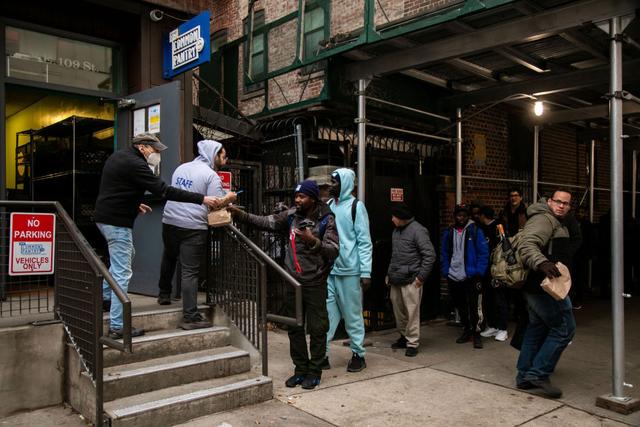
The picture shows that on December 24th, in new york, USA, the staff of "new york Public Food Storage Room" distributed free food to the public. Xinhua news agency
Multiple factors boost the polarization between the rich and the poor in the United States
This is not the first time that such a scene has appeared. In the past 100 years, the gap between the rich and the poor in the United States has shown a "positive U-shaped" trend of change.
The polarization between the rich and the poor in the United States is caused by many factors, including capital monopoly, electoral politics, government policies, the weakening of trade unions and racial discrimination.
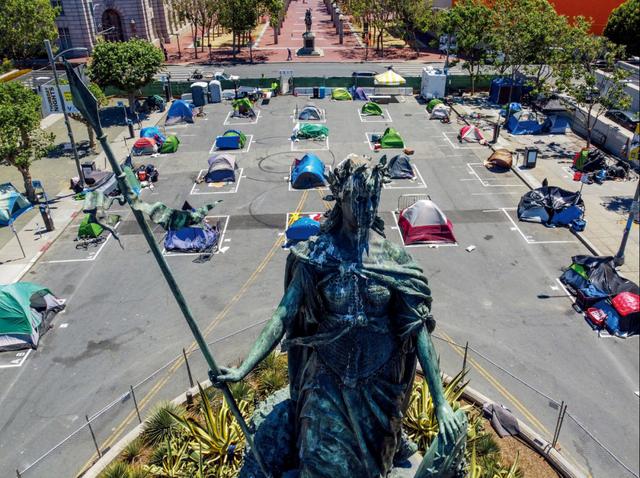
A camp for the homeless in San Francisco, USA. Source: China Newsweek
Polarization and unfair distribution of wealth are the normal and inevitable trend of capitalism., leading to the accumulation of wealth and poverty in the United States at the same time. Since the 1970s, American conservatism and liberalism have risen, and the concepts of marketization and internationalization have replaced the values of equality. The American economic system has turned to advocating privatization, giving up imposing progressive taxes, weakening trade unions and relaxing financial control. These policy choices have made the problem of polarization between the rich and the poor even more hopeless.
The weak strength of trade unions intensifies the polarization between the rich and the poor.In the 1950s, about one-third of American workers belonged to trade unions. In 1978, the membership rate of trade unions was still 23.8%, which dropped to 11.3% in 2011 and 10.3% in 2021. The proportion of black workers joining trade unions is higher than that of other races, and the decline of unionization has a particularly serious impact on black workers, aggravating the poverty of black ethnic groups.
The gap between the rich and the poor is closely related to race.The average income of American black, Hispanic or Latino families is about half that of white families, and their net wealth is only 15% to 20% of that of white families. Federal Reserve data show that this gap has widened significantly in the past few decades. Since 1989, the median wealth of white families has tripled, while the wealth of black, Hispanic and Latino families has hardly increased. According to a survey conducted by the Federal Reserve in 2019, the net assets of the median white family in the United States are 10 times that of the median black family, and the total wealth of the 400 richest American billionaires exceeds the total wealth of 10 million black American families.
Racial discrimination in the job market is serious.For a long time, the unemployment rate of blacks in the United States is about twice that of whites. Before the COVID-19 outbreak, the unemployment rate in the United States reached a historical low of 3.5%, but the unemployment rate of black and Hispanic workers was still much higher than this. Black Americans are poorly represented in high-paying positions in enterprises. In 2020, there were only four black CEOs in Fortune 500 companies.
The adverse consequences of the widening gap between rich and poor in the United States
More and more evidence shows that high wealth inequality is not conducive to economic and social development.
First of all, with the widening gap between the rich and the poor, demonstrations broke out in the United States in recent years.From the "Occupy Wall Street Movement" that originated in the United States in 2011 to the "Black Lives Matters" parade that opposed the violent law enforcement by American police in 2020, some demonstrations even turned into violent incidents. Behind the large-scale demonstrations are the dissatisfaction and struggle of the bottom people in the United States against racial discrimination, class solidification and wealth differentiation. In the case of constant social conflicts, the economic and social development of the United States will be affected to varying degrees.
Secondly,The polarization between the rich and the poor intensifies social injustice in the United States.In the United States, higher education resources are always disproportionately inclined to the rich, and low-income people lose equal opportunities for education. According to a statistic, among the 38 elite American universities, the number of students from the top 1% American families is more than that from the bottom 60% American families. According to a research report in Journal of American Medical Association, the average life expectancy gap between the poorest class and the richest class in California has widened to 15.51 years due to the COVID-19 epidemic. The deepening of racial conflicts, frequent urban riots and serious violent crimes … The chaos in American society is closely related to the widening gap between the rich and the poor.
Finally, high wealth inequality will breed more rent-seeking behaviors and bring social injustice.Joseph stiglitz, an economist, defines rent-seeking as "the act of trying to get more share of the cake without making a big cake". In American society, politicians generally need private financial support to carry out election campaigns. Moreover, compared with the poor, the rich often have more social influence and discourse power, and economic inequality will aggravate political inequality at this time. On the one hand, the rich tend to support tax relief policies, resist public welfare expenditure items and redistribution policies; On the other hand, the rich will persuade the government to deregulate their interest groups, thus gaining monopoly market and excess income. When the rich have more dominance in political decision-making, while the political participation of low-income people or the working class continues to decline, the division and opposition of American society will become more serious.
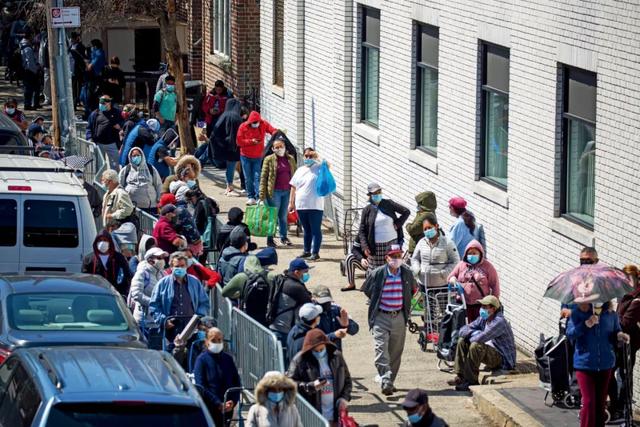
Source: China Newsweek
Xiong Yihan, a professor at Fudan University, once said:The measure of a society’s material civilization depends on how its poor people live; A measure of a society’s spiritual civilization depends on how well its rich people do.When the United States moves forward as the world’s number one capitalist country, it may be time to lift the glamorous veil and face up to the cold reality of its polarization between the rich and the poor.
Source: Comprehensive from Xinhua News Agency, Xinhuanet, China News Weekly and People’s Daily International Report.Guangzhou Daily Xinhua City Editor: Liu Chengyu
Reporting/feedback